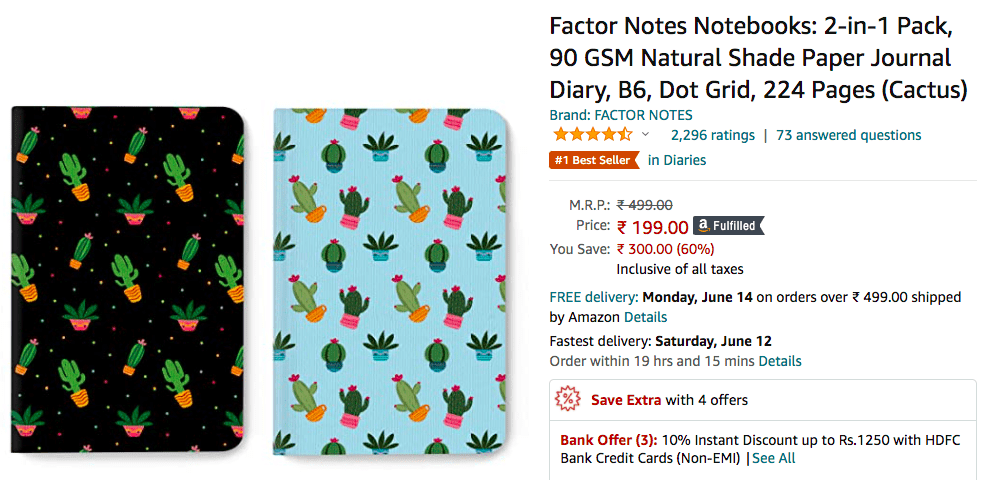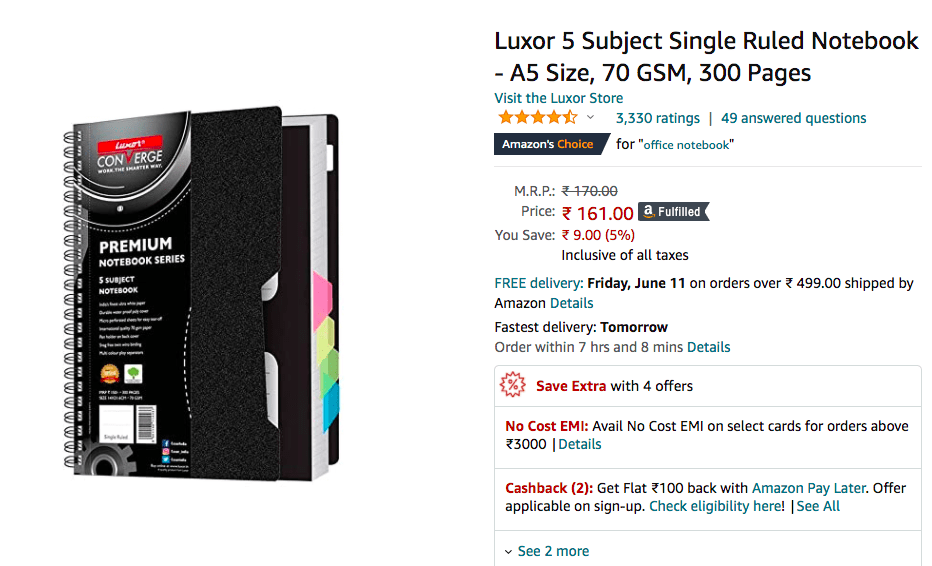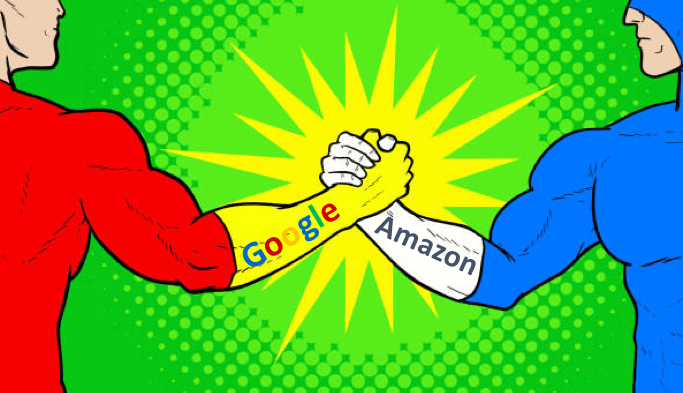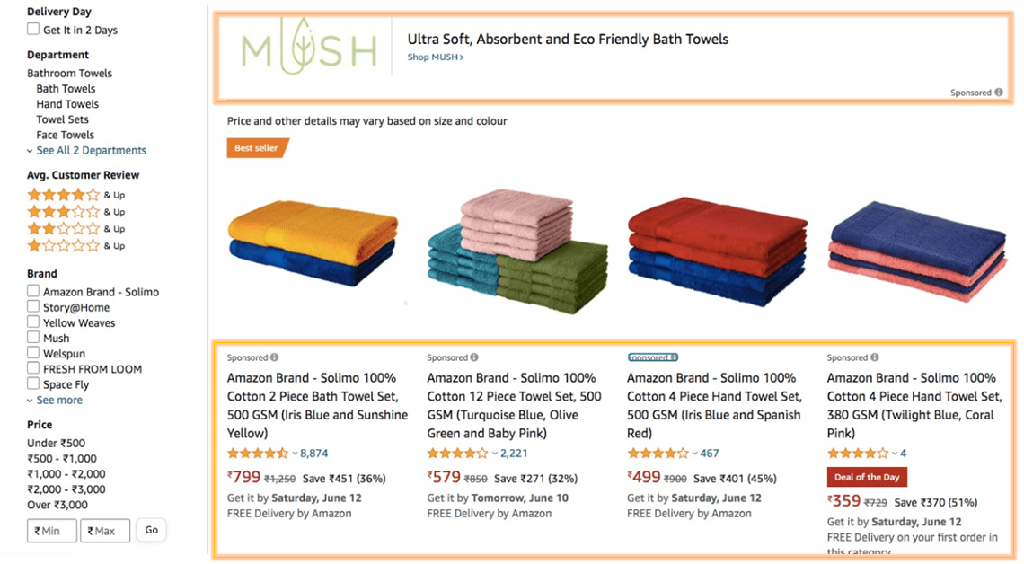More often than not, we think of Google rankings whenever we hear ‘SEO’. However, Search Engine Optimization (SEO) has a significant role to play in determining your product’s Ad Quality Score.
Whenever a potential buyer looks up for a product you sell, you would want your ad to show up first on the Search Engine Result Page (SERP) to increase traffic. However, if your SEO isn’t just right, you will not be able to bring in the intended amount of traffic.
Let’s begin to unfold what seems like a mystery and understand how to enhance your Amazon Ad Quality Score!!
How different are Amazon Ads from Google AdWords?
Google AdWords ensure that every business, big or small has an equal chance to compete by introducing ‘Ad Quality’. Here, the first ad to appear is not the one that has higher bids or reputation. Google takes into account two factors to determine its ad ranking:
- CPC bid
- Quality Score.
The CPC bid or the Cost-Per-Click Bid is the maximum amount you bid for a keyword while Quality Score is determined on the basis of hoe relevant your ad is to the buyer.
Ad Rank is calculated by the formula:
Ad Rank = Cost-Per-Click Bid X Quality Score
Google AdWords works in the following way:
- Gets more clicks on an Ad
- Better Experience for shoppers
- AdWords makes more Money
- AdWords rewards the Advertiser with higher ranking and cheaper clicks
If you are an advertiser putting up ads that no one clicks on, you will be considered as a low-quality advertiser, and you end up being penalized. This prevents huge corporations from bidding exorbitant bids and dominating the top spots.
Keyword Bidding Types
Automatic Campaign:
If you are a beginner and haven’t figured out which keywords give you the best results, automatic campaign is the one for you. In the automatic campaign, you let amazon suggest you the best keywords based on your product, title and your budget. This way you wouldn’t have to be an expert to set your ppc and it also saves your time. Amazon even suggests you long tail keywords that can bring out the best results which you might not have guessed. There are also reasons why you might not want to choose the auto campaign. You are not in control of your budget during the campaign. Amazon chooses the bid for your keywords. You don’t even know why amazon is giving you some key words. You’ll just have to go with the flow.
Manual Campaign:
Manual campaign allows you to choose the key words that you want to include and remove the keywords that aren’t bringing you sales. You are also in total control of how you spend the budget during the campaign. But this campaign is more time taking than automatic. While setting up manual campaigns it is crucial to choose the most beneficial match.
Keyword Match Types
Both Google and Amazon share the three match types used to bring in traffic. There are three types of match types – broad, phrase, and exact.
Broad keyword match type:
It bids on keywords that are broadly related to you product. The broad keyword match type is the least restrictive of all the match types. When someone searches for relatively closer variations of that exact keyword, or with extra words before or after it. It includes more long tail keywords. These are less competitive and cheaper.
Phrase keyword match type:
It bids on keywords that appear in search phrases the customer types. Phrase keyword match type is more restrictive than broad but has greater exposure than exact. For example, for the keyword denim jeans, the search terms denim jeans for women and blue denim jeans are also considered eligible.
Exact keyword match type:
It bids on keywords that are very specific to your product or brand. Though the exact keyword match type is most restrictive than the rest, it is highly targeted and relevant. They are more competitive and expensive.
How Amazon ranks its ads is very similar to AdWords, but they do have different ad motives. Google wants to show ads that are closest to what is entered in a search term query while Amazon wants to show ads that the customer is most likely to buy. This key difference extends the idea of a “Quality” Ad.
Optimizing Ad Rank and Amazon SEO
Amazon’s algorithm takes into account two types of metrics that determine and improve the overall quality score of your ad:
Performance Metrics:
- CTR (Click-Through-Rate)
- Conversion rate
- Overall sales
Relevance Metrics:
- Product title
- Description
- Search terms
- Seller name
To improve your product’s ad rank, you must work on each of the above metrics (both performance and relevance) and improve each one of them.
1. Amazon Click Through Rate (CTR)
Amazon Click Through Rate (CTR) is the ratio of shoppers that click on your ad to the number of times it is shown. Each of the campaigns and keywords have a specific CTR that measures how successfully your ad compelled the customers to view your product.

- Image
First impression is the best impression!!
Optimizing your product image is the most important thing that should be paid attention to as this is the only image of your product that the buyer sees before clicking. It is the single biggest factor that contributes to your CTR. Make sure that your image looks professional and trustworthy at the first glance. Your ad image should emphasize the key details of your product.
Usually, the image ratio is either a square 1×1 or a vertical ratio of 58×45. The optimum size for the square image is 2000px X 2000px. This way, the image can facilitate the zoom functionality without having resolution issues.
- Relevant Keywords
Amazon lets you know which keywords bring in more traffic (high CTR). CTR tells you whether your ads are attracting the target audience. You can then take the less relevant keywords off your list to reduce your cost. he higher the CTR, the more relevant your keywords and more success are in attracting your target audience.
- Reviews
This is another key factor that a buyer would look at before taking out his/her time to click and view your product. Usually, customers think of a product with more reviews as more reliable as buyers trust buyers.
2. Amazon Conversion Rate (CVR)
Conversion rate is the ratio of the number of clicks converted to sales to the number of clicks. More conversion rate means more successful is your ad in promoting your brand. This means your ad is not just attracting traffic, but attracting the right traffic.

Conversion rate is used to measure the number of page visits that result in a sale.
Badges
When scrolling through Amazon products, the buyers always prefer to stop and purchase the products which have ‘Amazon’s Choice’ or ‘Best seller’.

Fulfillment by Amazon
As it is fulfilled by amazon, its name will be associated with your products and makes your product appear more reliable to the buyers. FBA ensures super-fast delivery. Who would wait for about a week when they can get it within a day or two?

You will have access to new prime eligible customers. More than half of the shoppers are usually prime account holders. Only the products Fulfilled by Amazon are eligible for Amazon Prime. Moreover, Prime customers spend twice more than regular customers. If there is a product that as good as yours in the listing, but you have an added advantage of Amazon Prime delivery, the buyer would choose yours without a second thought.
3. Overall Sales
Both sponsored ads and organic ranking work together to increase your sales. Suppose you’re product is somewhere in the later pages of the search results and then you use sponsored ads to get to the top and make sales. As your sales increase, your product will gradually move to the top organically. The more sales you make, the faster you will top the search results organically.
If your product is listed first due to both PPC and organic ranking, you’ll be able to increase your sales drastically and have higher profit margins.
4. Product Title
The title is the first text that a buyer would look at. This is why emphasizing the main keyword in the title is quite important. The title also contains other text areas. Use this region to accentuate the main features of your product. This descriptive text lets buyers know that your product is the one they are looking for and they click your product at the snap of a finger.
5. Description
The description of the product should aim to persuade the buyer to purchase your product. Optimized descriptions can skyrocket your sales.

- Keep the description neat, simple, and easy to understand.
- The description should contain all the key features of the product to help buyers make an informed decision.
- Try to put the description in bullets to make is easy to comprehend.
- It should be attractive enough to make a sale.
6. Customer Support
Negative reviews decrease your ad rank. This means you should be able to respond and do the needful to the buyers. A proper customer support ensures that the customers are satisfied with your product and are highly likely to revisit. This increases your sales in turn increasing the ad rank.
Does higher bid mean better ad rank?
Now that you’ve done your best to improve your Click-Through-Rate and Conversion Rate, you can comfortably increase your bidding.
Just like everything else, bidding higher also has its pros and cons.
Pros:
- Increased traffic
- Increased visibility
- Increased sales
Cons
- Higher cost-per-click
- Higher ACoS (Ad Spend / Total Sales)
Summing Up
The overall quality of your ad is considered by taking into account all the factors that the almighty A9 algorithm likes to consider and help you gain more sales. Amazon’s algorithm will combine all these factors that make for your ad have a good ranking just like the Quality Score on AdWords. Amazon’s A9 algorithm has been historically private about how they rank ads, so we must do everything in our power to improve all the factors that affect your ad’s rank.


